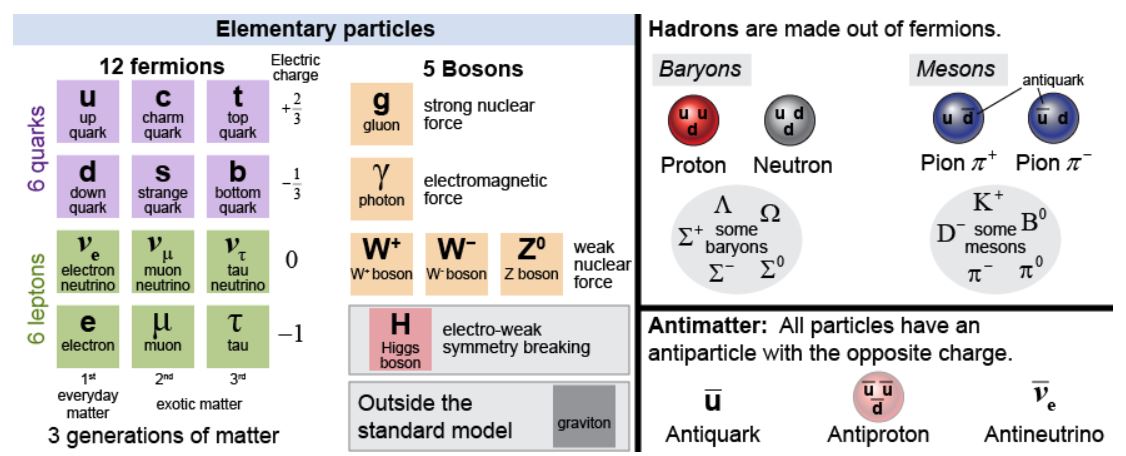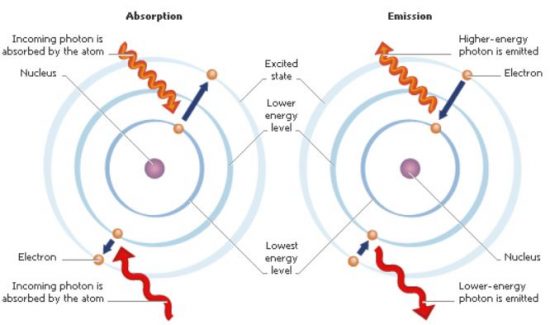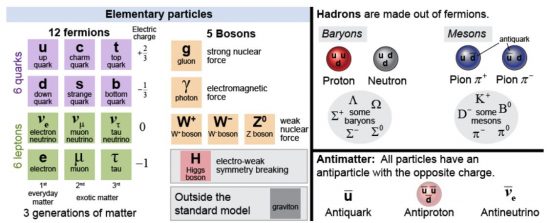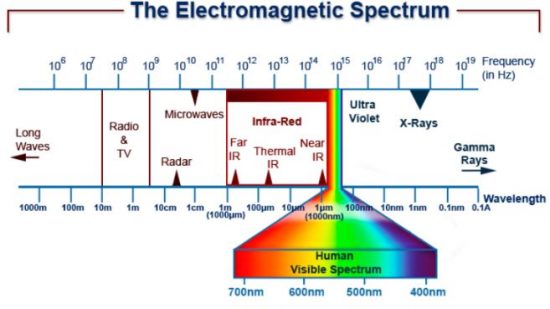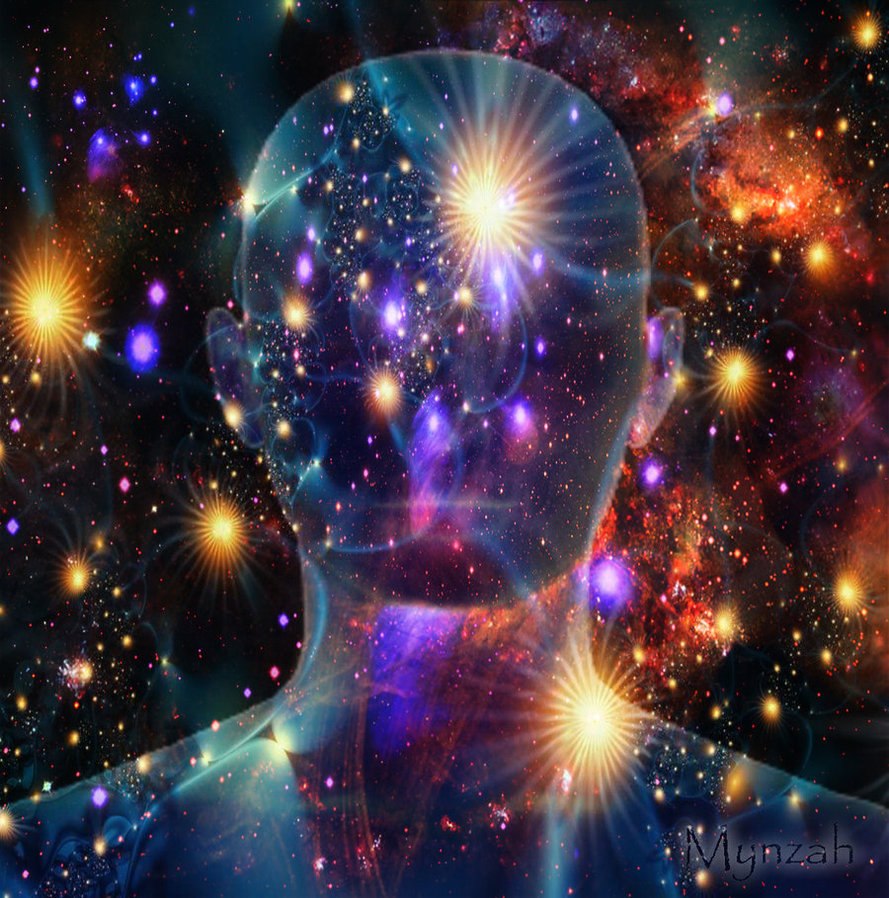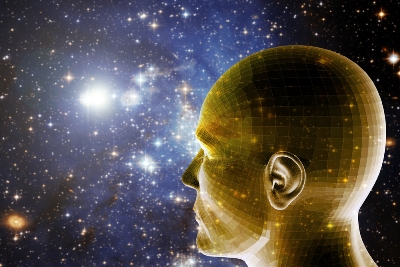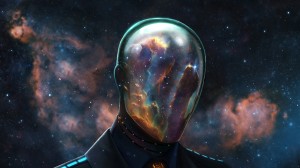If we live in a multiverse, the folks at the periphery who look away will likely see universes like ours that emit EM radiation. Those universes that don’t broadcast electromagnetically will be as invisible as dark matter, which many believe makes 85% of the stuff that lies all around.
Presumably, universes look different than stars or galaxies; observers at the periphery might be able to tell the difference.
Some conjecture that universes are nothing more than black holes, which together form an infinite foam that flows perhaps to infinity.
Inside each black universe are more black holes which house black holes that contain more black holes and on and on in a progression that pushes holes to infinity like the reflections in funhouse mirrors.
Black holes emit Hawking radiation, which means they glow in the dark of space. Perhaps it is Hawking radiation observers at the peripheries will learn to detect, measure, and catalogue as they study a multiverse humans will never see.
Sadly, Earthlings are buried somewhere inside an enormous place at least 93 billion light years across. The periphery of this vast expanse is pushing outward at 7 times the speed of light.
We can’t see to the edge of our own universe; we have no way to observe universes that lie beyond the reach of our telescopes—should more than one be “out there.”
Observers at the periphery should know things about the nature of reality that Earthlings can only guess. They see beyond our peripheries.
But isn’t it also true that we know things they don’t? Because of our more “central” location we understand better than those at the peripheries what the size and age of the universe must be.
Maybe.
If we could only collaborate with the Peripherans to share what we’ve learned. Laws of physics make a forever prison that walls away the truth of all that goes lost beyond the boundaries of human sensors.
It’s not entirely clear that what astrophysicists call vacuum is in fact empty.
The conjecture that 95% of the universe is not electromagnetically active but is active gravitationally should be kept in mind because light bends and decelerates in the presence of gravity. The best known example is black holes, which divert and trap photons.
Are there volumes of space inside the Universe where the conjectured dark energy and dark matter don’t reside? If so, does the speed of light increase or decrease inside these volumes?
Light slows as it passes through materials like glass. Some kinds of glass slow photons by as much as 40%.
One explanation is that photons excite electrons as they pass over and through the molecules and atoms that make glass. Because photons passing through are not necessarily at frequencies resonant with the electrons in the glass, electrons are unable to absorb enough energy to jump from one energy state to another. Instead, they vibrate just enough to emit polaritons, which impede photons like a pool of molasses impedes dropped pebbles.
The photons of light seem to acquire mass as their velocity decreases. When the photons exit glass they again go “massless” and resume lightspeed instantly.
Could a phenomenon similar to that of glass be typical of the space inside the Milky Way Galaxy where planet Earth resides? If so, what everyone thinks they know about EM waves and the isotropic nature of the Universe might need some tweaking.
If it turns out that despite the consensus of science, photons do indeed contain a small amount of mass, they might have enough in aggregate to account for the curious behavior of galaxies. Conjectures about the invisible dark no one can see might not be necessary.
If this distance is scaled down to equal the circumference of Earth, the expansion will measure about one-tenth of a mile per year. Over a human lifetime the expansion will measure 8 miles. No ordinary non-scientist will notice the difference at this scale.
The universe is at least 93 billion light-years across. Do the math to see that space is expanding from one side of the universe to the other at 7 times the speed of light.
But some perspective is in order. Inside the Milky Way Galaxy, which is roughly 100,000 light years across, the expansion is a mere 1.4 miles-per-second. Remember: a light year is almost 6 trillion miles. The Milky Way is almost 600,000 trillion miles across. 1.4 miles-per-second is practically nothing.
The nearest star to the Sun, Proxima Centauri, is 4.5 light years away—26 trillion miles. In one year the space between us and it expands by less than 2,000 miles. Meanwhile, the star itself is moving away from our Sun 200,000 times faster—about 12 miles-per-second. The expansion of space accounts for almost none of the separation.
Force is a measure of mass accelerating, right? Mass is not really accelerating due to the expansion of space. Space is puffing up like a loaf of raisin-bread in an oven. The raisins (galaxies) get carried along by the expansion.
The light that travels between stars and galaxies stretches into redder wavelengths as the loaf grows. But forces accelerating galaxies and stars are almost entirely due to masses acting over distances too short for the expansion of space to have any more than a statistically negligible effect.
The expansion of space adds up over larger and larger distances to become enormous, yes, but in the much smaller volumes of space where a few dozen or so galaxies live the gravity-induced distortion of spacetime by mass overwhelms it, at least for now.
Currently, I favor the idea by Roger Penrose and others called Conformal Cyclic Cosmology (CCC). The basic idea is that a sufficiently old and expanded universe will lose all its mass through evaporation out of black holes; the metrics of spacetime become indistinguishable from a singularity, because without mass, spacetime is meaningless.
The universe puffs along like smoke from a choo-choo train—each universe emerges in a kind of “big bang” from the dying gasp of the last.
In this scenario, the universe is eternal backward and forward in time. It has no beginning or end; it has EONS that last trillions of years and endlessly repeat. The universe never collapses; it expands. When its mass evaporates into energy, it triggers a new expansion that generates in its wake new matter and gravity to provide the metrics necessary for spacetime to once again emerge.
This idea does not rule out the possibility of God, but it doesn’t support the idea either.
It also doesn’t rule out the possibility that humans live inside a simulation.
Smart thinkers like Nick Bostrom have argued that the statistical probability of a simulated universe approaches certainty. If so, humans can’t know what the underlying reality is that enables a simulation like ours to be created and sustained.
Such a state of affairs opens the possibility that we are created and accountable to a creator of worlds who has its own reasons for doing things, which aren’t necessarily ones we can understand.
The hard problem of consciousness is a clue for those who believe the universe comes first and consciousness second that they might have the order reversed. The possibility that conscious life is fundamental and foundational is something folks might want to keep in mind.
I don’t know.
Alan Guth is the most prominent voice for this conjecture.
Evidence for B-Mode polarization of gravity waves would support the idea that cosmic inflation is likely to be unstoppable; some think that runaway inflation creates matter and gravity in its wake. The process forms universes that bud and break off into new universes as the expansion of space foams along.
E polarized waves in the cosmic background radiation can be transformed into B polarized modes by either gravitational lensing or cosmic inflation. Determining which is which is difficult because space dust can and does mess with the data to give misleading results.
The problem is that no one has been able to prove that anyone has detected B-mode waves that aren’t the result of either gravitational lensing of E-modes or their interaction with space dust.
EDITORS NOTE: 2019-02-05
Some readers have complained that E & B mode waves are incomprehensible. To help, we have added a video followed by an excerpt from Wikipedia about the Cosmic Microwave Background:
From Wikipedia: The cosmic microwave background is polarized at the level of a few microkelvin.
There are two types of polarization, called E-modes and B-modes. This is in analogy to electrostatics, in which the electric field (E-field) has a vanishing curl and the magnetic field (B-field) has a vanishing divergence.
The E-modes arise naturally from Thomson scattering in a heterogeneous plasma.
The B-modes are not produced by standard scalar type perturbations. Instead they can be created by two mechanisms: the first one is by gravitational lensing of E-modes, which has been measured by the South Pole Telescope in 2013; the second one is from gravitational waves arising from cosmic inflation.
Detecting the B-modes is extremely difficult, particularly as the degree of foreground contamination is unknown, and the weak gravitational lensing signal mixes the relatively strong E-mode signal with the B-mode signal.
Scientists like Brian Keating have claimed in the past that they detected B-Mode polarization in gravity waves only to have to retract later when others offered alternative explanations. Nevertheless, Keating is involved in an effort in Chile to gather new evidence that he hopes will be incontrovertible and lead to a Nobel Prize.
If gravity waves with B-style polarization are not found, an argument will be made that cosmic inflation is not creating alternative universes. The proposals for ekpyrotic and other cyclic models of cosmology by folks like Steinhardt and Penrose will be strengthened.
The statistical certainty required to qualify a discovery is at minimum 99.9994% (5σ). In the best data so far, 97.2% is the closest to 5 sigma that anyone has reached.
The statistical metric that proves B-style gravity waves is formidable but within our grasp should it turn out that cosmic inflation really is generating universes.
So far, the evidence for alternative universes is not sufficiently robust.
Who knows?
If humans live inside a simulation, reality outside the simulation might be foreign to the sensibilities of any simulant “genius” who tries to decipher and make sense of the rules.
In the reality that exists beyond, stuff other than mass and energy might be fundamental and foundational. Conscious life might not be troubled by the mysteries of existence, because outside the simulation there are no mysteries.
Is it possible that somewhere “out there” beyond the walls of the simulation, everything makes perfect sense?
Deplorable people develop ravenous appetites for scum. The more evidence presented that Trump is scum, the more his followers love him.
Trump lost the popular election by 11 million votes—3M to Hillary; 8M to independent candidates.
As long as votes are flipped in certain strategic counties, he will win the electoral college even if he loses the popular count by 20M or more.
It’s not possible to defeat a cult where everyone cheats to get the results they all want.
I know evangelical Christians who volunteered for the first time to work at polling stations in 2016 to make sure Trump’s votes were counted.
My question is whether these cult followers took as much care to make sure the votes of Trump’s opponents were counted fairly.
We’ll never know.
People have trouble accepting the mathematically provable fact (look it up or take a college course) that fair elections are not possible. It is not possible to set up an equitable system to select a slate of candidates from which voters are able to fairly pick a single winner.
Nevertheless, we do the best we can, right?
In the USA, fair results are further disrupted by state election boards who flat out cheat, and we have the problem of the electoral college.
The current president claims he won by a landslide in the electoral college, but the truth is that he lost by the largest popular margin in the history of elections—11 million votes, which were 8% of the ballots. Clinton got 3 million more than Trump; third party candidates gathered in another 8 million.
Trump proved that he could win in the electoral college by tweaking the results in a few counties in three states. Confirmational recounts and challenges were squelched by GOP state courts in Michigan, Wisconsin, and Pennsylvania.
Even in Michigan where state-wide election results favored Democrats by 20 points, no recount was permitted Hillary Clinton who lost by 10 thousand votes.

NSA analyst, Reality Winner, is currently serving an 8 year sentence of incarceration and media censure for trying to alert the public to voting machine tampering that executives at the National Security Agency know occurred.
Everyone remembers (or should remember) the fiasco in Florida that elected Bush Junior in 2000. The consequences were a disaster from which the USA is yet to recover. Twin Towers, Iraq War, financial collapse, and Great Recession are trigger words to help people remember the nightmare some may have repressed to stay sane. The USA came close to becoming a third-world country almost overnight.
In 2016 Americans shoved their way onto the Titanic one more time—the captain of the ship doesn’t even know how to swim. There is no way most Americans will survive the catastrophe that is on its way. We are going to hit an iceberg in the middle of the night. The water that we die in will be cold. In this movie, no one is coming to the rescue.
Multi-celled life with neuron based brains came on line less than 400 million years ago.
One celled organisms like amoebas and protozoa are incredibly intelligent and agile yet they lack neurons, which seem to be the foundational units of modern brains. Fossils of amoebas have been found in rocks that are older than 400 million years.
To mechanically recreate a modern brain requires much more than simply wiring-up in three dimensions a hundred billion or so logic gates. Actually, such a building project would be prohibitively expensive and impossible to accomplish using current fabrication capabilities.
Even if it were possible to create the neuronic architecture of a brain, other mechanical structures such as nanoscale microtubules are probably essential to bring the brain into a conscious state such as the one experienced by humans.
Microtubules are the bones of cells—a sort of scaffolding to hold everything together. They play an essential role in meiosis and mitosis to keep DNA from becoming an entangled mess during cell divisions. They have a quantum nature that adds a probably essential complexity to neuronal activity inside brains.
Brains also have a chemical nature that enables them to interact with the complicated hormonal chemistries of the body to drive emotional intelligence—an intelligence essential to survival that depends on feelings to work properly.
The point is that before anyone can build a working brain, they will need to understand what a working brain is and how it actually functions. This knowledge may lie hundreds of years into the future. It might require super-computers to figure out how brains work; artificial super-intelligence is what might be required to create the schematics, blueprints, and production protocols to build living brains.
It’s possible that the artificial intelligence of a distant future will be what is finally able to recreate brains by deploying strategies that humans can never hope to understand, because sadly homo-sapiens may not be smart enough.
Light is electromagnetic radiation. We can feel some frequencies as heat, some we can see, but most frequencies we don’t see or feel. Humans evolved to see and feel frequencies of light that are prevalent at the surface of Earth and are able to penetrate into a few feet of saltwater in the oceans.
Earth’s magnetosphere and its atmosphere of nitrogen and oxygen deflect or block high frequencies of light that pack a lot of energy. Life on Earth didn’t evolve to sense light frequencies that don’t get here.
Astronauts in space encounter these higher frequencies of light. Excursions into space are carefully choreographed to avoid solar flares and other known sources of high energy light. So far we’ve been lucky. No space traveler has yet been cooked by light they can’t see. On Earth people have learned not to stick their hand into an invisible beam of microwave light. They heat their coffee with microwaves instead.
If humans were the size of galaxies and lived in space, they would sense less than one percent of the energy and mass that is out there. 95% of the mass and energy in the universe is not electromagnetic according to the latest conjectures by astrophysicists. Space people will sense only a small fraction of the 5% that is electromagnetic—what everyone calls light and matter.
In the large scales of space, humans are tadpoles in the desert. Nothing in space makes survival easy for lifeforms accustomed to living under a blanket of heavy gases inside the comfort of a massive magnetic field that is generated by a planet unlike any other that astronomers have yet seen.
It’s impossible to know, but the most probable scenario is that it will be swallowed by the Sun. Earth is likely to be struck by an asteroid that will break it into pieces; many will fall Sunward.
Solar systems have the reputation of being unstable over long periods. A popular conjecture of some cosmologists is that one or more of the giant outer planets might have moved inside the orbit of Mars during the distant past. Were this event to play out again, Earth’s orbit would be disrupted; it might be flung out to the faraway depths of the solar system or into the Sun.
If Earth drifts to the outer reaches of the Solar System it will—over many millions of years—freeze solid. It will generate its own heat only by radioactive decay of the uranium and thorium in the material beneath its crust. Radioactive heating seems to be typical in objects like Pluto and several of the moons that orbit Jupiter and Saturn. They have, some of them, warm oceans many miles below the frozen crust and ice that make their surfaces.
The moon stabilizes Earth’s tilt and rotation on its axis. The moon is receding at 1 to 1.5 inches per year. In 3B years, the moon will be 60,000 miles farther from Earth. Its gravitational pull will drop to almost half of what it is today. Computer simulations show that Earth is likely to start wobbling chaotically, even tip over onto its side. Such a scenario will disrupt climate and seasons to spark extinctions of plant and animal life.
A more urgent crisis is the production by humans of many thousands of tons of radioactive poisons, chemical toxins, and biological agents that can induce disease. These materials must be secured and protected for many tens-of-thousands of years to prevent breaches of containment structures, which will rust and rot after the humans who maintain them no longer can.
Risk analysts like Nick Bostrom have speculated that humans are likely to suffer an extinction event during the next few thousand years. Without human caretakers it might take less than 500 years for the poisons to break out to soak the earth like vinegar in a sponge.
Huge die-offs of life-forms might occur.
CCC produces EONS in an infinite progression of puffs—much like a steam locomotive emits a series of puffs from its smokestack as it chugs along on its tracks.
These eons last trillions of years. At the end of an eon all matter has been sucked into black holes where it evaporates by the mechanism of Hawking Radiation. The Universe ends devoid of matter, which is necessary to establish the metrics of space and time.
A universe without matter is conformally equivalent to a singularity. The process by which a universe emerges from a singularity will be the same process that pushes a universe devoid of mass into becoming a new universe.
Under the CCC scenario “big bangs” create new universes on the ashes of the old to eventually introduce the matter necessary to establish the spacetime metrics of relativity and the foundational realities of the quantum world.
If CCC is valid, evidence of Hawking Points left behind from prior universes should be able to be identified in the cosmic background radiation. The search for these points has already begun.
You are referring to the surface of last scattering, which isn’t a thing but is instead an estimated location.
The cosmic background radiation is a thing—1E90 photons released in the great photon decoupling event that occurred, I don’t know, maybe a half million years after the origin of the Universe we live in now.
These photons are still here; they saturate all space like vinegar in a sponge.
The surface of last scattering is the place where astronomers look to get an idea of how uniform was the decoupling of photons when the Universe turned on the lights.
The location of the decoupling event is a long way away (13.7B light-years maybe), but the distance to the edge of the universe on the other side of the surface of last scattering is a lot farther.
One reason is that space is currently expanding at 14 miles-per-second for every million light-years of distance. The edge of the Universe beyond the surface of last scattering is at least an additional 32B light-years; at its edge the Universe is expanding outward from the perspective of Earth at 3.5 times the speed of light.
We live at the center of a sphere of celestial objects we can detect that is 27.6 billion light-years across. Our physics predicts that the universe we can’t see is 93B light-years across at minimum. Across 93B light years, the expansion of space adds to 7 times the speed of light.
Because it is almost certain that Earthlings don’t live at the center of the Universe, most scientists familiar with the matter think that the actual universe is bigger than 93B light-years—perhaps a lot bigger.
If I’m a prisoner, I want visitors. Celebrity visitors are even better.
Jane provided a first-hand account—a picture—of the captivity that helped war planners set up the conditions for an eventual release. We got almost all the POWs back.
Jane Fonda doesn’t get credit for the good she did. Probably the most important thing she accomplished was to remind Americans that we were attacking a primitive people thousands of miles from home for no good reason.
Had Vietnam been a nation of puppies and kittens, the atrocities of war would have affected more people whose hearts became stone as they continued to fight for too many years.
Many veterans have hearts that have yet to melt. Many are unable to apologize for their gullibility even now in their golden years as they prepare to meet God and account for their lives. Their leaders lied; soldiers believed the lies then; some continue to believe.
History has proved that those who protested the war were right. We owe Jane Fonda big time for having the courage to speak truth to racists and killers.
How many civilians display courage in the face of evil?
The United States killed over two-million souls during that depraved debacle. How is the world better? We have bitter people on all sides who won’t look into the mirror and take responsibility for what they did.
Blaming Jane Fonda for our moral failings is a mistake we must fix in order to heal.
Remember the formula that says force equals mass times acceleration.
F=m*a
Force is weight, right?
Mass accelerated by a gravitational field is what gives an object its weight (or force).
So it seems reasonable to believe that if mass is zero, force must also be zero. But that idea would be wrong. Another concept in physics is momentum. It is mass multiplied by its own velocity. Momentum is energy that can be used to do work.
Massless objects like photons have energy too. Photons have the ability to do work. The energy of light is related to its color (or frequency). The higher a photon’s frequency the more work it can do. Gamma photons have the highest frequencies. Some have energies equivalent to baseballs thrown by professional pitchers.
So it seems that both massless photons and massive matter have energy that can do work. Energy is energy so momentum must have some kind of equivalence to the frequency of massless photons.
What is work? It is force multiplied by the distance through which it moves. Since both massless photons and massive matter can do work they both must have some kind of equivalence related to force.
Therefore it is true that a massless photon can exert a force, which when measured can be thought of as its weight. The wave-particle duality of photons is another way of saying that an object with no mass can have weight (or force).
The idea that an object with no mass can exert a force which can be measured as “weight” has puzzled folks for a very long time. However, a string of formulas can be constructed to show that it is true.
The energy of photons goes up in tiny increments called quanta as their frequencies increase. When the energy gets high enough it gets difficult to force a photon to step up to the next highest energy level. It is something to keep in mind when pondering the physics of quantum phenomenon like black-body radiation or the photo-electric effect that Einstein described to win his Nobel Prize.



